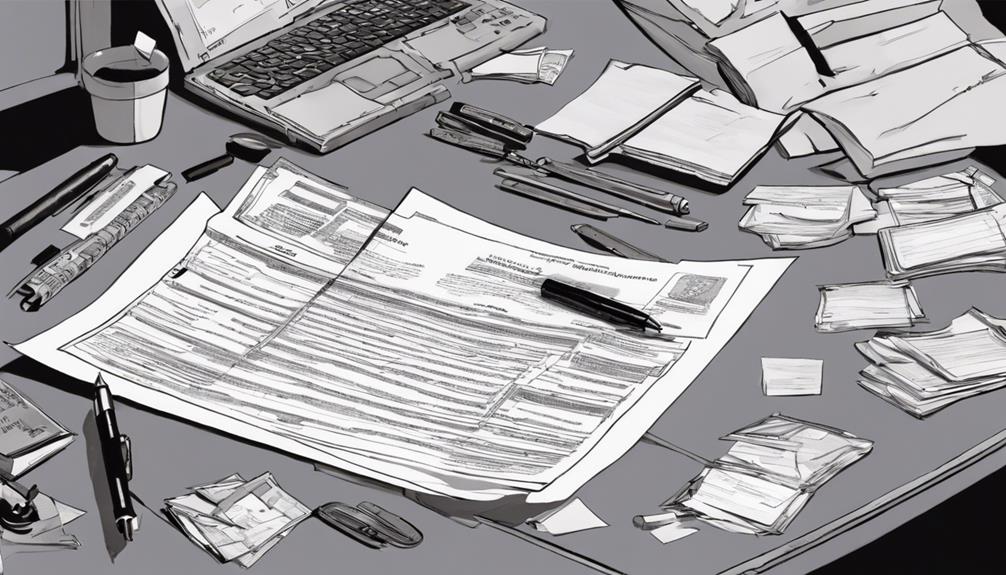When going through the complexities of getting a divorce, it is essential to comprehend the particular steps that are necessary in Montana.
From deciphering residency prerequisites to unraveling the various grounds for divorce, a clear roadmap can streamline an otherwise complex process.
However, as we delve into the realms of filing procedures and finalizing the dissolution, certain nuances may present themselves, warranting a closer examination of legal considerations and potential challenges that could arise.
Key Takeaways
- Establish Montana residency for at least 90 days before filing.
- File for divorce citing irretrievable breakdown as the only grounds.
- Prepare necessary documents like the Petition and Parenting Plan.
- Ensure proper service of divorce papers and comply with post-decree terms.
Residency Requirements for Divorce in Montana
When considering the process of getting a divorce in Montana, one crucial aspect to address is the residency requirements that must be met by at least one spouse. In Montana, the state mandates that at least one spouse must be a resident for a minimum of 90 days before filing for divorce. This relatively short period can make it more accessible for individuals seeking to dissolve their marriage.
Interestingly, military personnel stationed in Montana also fulfill the residency requirement, simplifying the process for service members. Proof of residency can be established through various documents like utility bills, a driver's license, or voter registration, demonstrating a commitment to making Montana the primary home.
It's essential to show the intent to reside in Montana to meet the state's residency requirements and initiate divorce proceedings within its jurisdiction. Understanding and meeting these residency criteria are fundamental steps towards navigating the divorce process in Montana efficiently.
Grounds for Divorce in Montana

To proceed with filing for divorce in Montana, understanding the state's sole grounds for dissolution, the irretrievable breakdown of the marriage, is crucial. In Montana, the law only recognizes the irretrievable breakdown of the marriage as a valid reason for divorce, making it a no-fault state. This means that fault-based grounds such as adultery or cruelty aren't required to end a marriage in Montana.
When filing for divorce, the Petition for Dissolution must clearly state the irretrievable breakdown as the reason for the divorce, as per Montana law. By focusing on no-fault divorce, Montana simplifies the process by eliminating the need to prove fault, streamlining the dissolution process.
This approach allows couples to dissolve their marriage without the complexities of fault-based grounds, enabling a more straightforward resolution concerning marital property, assets, and debts.
Filing for Divorce in Montana
Navigating the process of filing for divorce in Montana requires careful attention to residency requirements and the proper documentation submission. To initiate divorce proceedings in Montana, one spouse must meet the residency requirement of residing in the state for at least 90 days before filing.
The key document to commence the legal process is the Petition for Dissolution of Marriage, which needs to be filed at the appropriate county court along with other essential paperwork. Montana operates under a 'no-fault' divorce system, where the grounds for dissolution are based on the irretrievable breakdown of the marriage rather than assigning blame.
In cases involving minor children, a detailed Parenting Plan outlining custody, visitation, and financial support must be included in the filing. Additionally, considerations for property division, spouse support, and child support are integral parts of the divorce filing process.
It's important to note that there may be a filing fee, typically around $200, though fee waivers are available for eligible individuals. Understanding the legal requirements and responsibilities when filing for divorce sets the foundation for a smoother dissolution process.
Serving Divorce Paperwork in Montana

After filing for divorce in Montana and ensuring all necessary paperwork is submitted, the next crucial step is serving the divorce paperwork to the spouse to notify them of the legal proceedings. In Montana, divorce papers must be properly served to the spouse using methods such as personal delivery, certified mail with return receipt requested, or through a process server. Proof of service, like a signed acknowledgment or return receipt, is essential to demonstrate that the spouse received the divorce papers.
If traditional service methods aren't feasible due to the spouse being unlocatable, the court may permit alternative methods such as service by publication in a newspaper. It's vital to adhere to the correct procedures for serving divorce paperwork as it's necessary for the legal process to proceed smoothly and for the court to have jurisdiction over the case. Proper service ensures that both parties are informed of the divorce proceedings and have the opportunity to respond accordingly.
Finalizing the Divorce Process
In finalizing the divorce process in Montana, attending a final hearing in front of a judge is a crucial step. This court hearing is where the judge will carefully review the divorce settlement agreement or make decisions on any unresolved issues, such as property division, child custody, and support arrangements.
Once the judge approves the terms of the settlement, a final decree of dissolution is issued. This final decree marks the official termination of the marriage and legally outlines all the agreed-upon terms. It's essential for both parties to comply with the stipulations in the decree after it's issued to ensure a smooth transition post-divorce.
Understanding the legal terms and implications of the final decree is vital to moving forward successfully. By following the judge's approval and abiding by the terms set forth, both parties can effectively conclude the divorce process in a manner that respects the law and upholds the agreements made.
Frequently Asked Questions
What Are the Steps to Getting a Divorce in Montana?
We start by meeting the residency requirement and then prepare and file necessary forms. After serving them to our spouse, we wait for their response. Compliance with court procedures is crucial, including resolving custody and property issues.
What Steps to Take Before Asking for a Divorce?
Before asking for a divorce, we gather crucial documents, seek legal advice, evaluate finances, and prioritize emotional well-being. Like a ship preparing for a storm, we brace ourselves, ensuring readiness for the turbulent seas ahead.
How Much Does It Cost to Get Divorce in Montana?
Getting a divorce in Montana can cost around $200, but fees may vary based on individual circumstances. Options for fee waivers exist. Additional costs like serving papers and legal fees can apply, especially in contested cases.
How Is Debt Divided in a Divorce in Montana?
When dividing debt in a Montana divorce, we carefully evaluate factors like financial status and contribution to the liabilities. We ensure fairness by considering each spouse's role in the debt and the overall asset distribution.
Are the Steps to Get a Divorce in Montana Similar to the Steps in Nebraska?
In both Montana and Nebraska, the essential steps for Nebraska divorce are similar. Both states require filing a petition, serving the other party, and attending a hearing. However, specific requirements and procedures may vary, so it’s important to consult with a legal professional familiar with the laws in each state.
Conclusion
In conclusion, getting a divorce in Montana can be a challenging process, but with the right guidance and support, it can be navigated smoothly.
While some may worry about the complexities of legal procedures, our comprehensive guide breaks down the steps in a clear and concise manner.
Remember, you don't have to go through this alone – seek out the necessary resources and assistance to ensure a successful outcome.
Your future is worth it.










